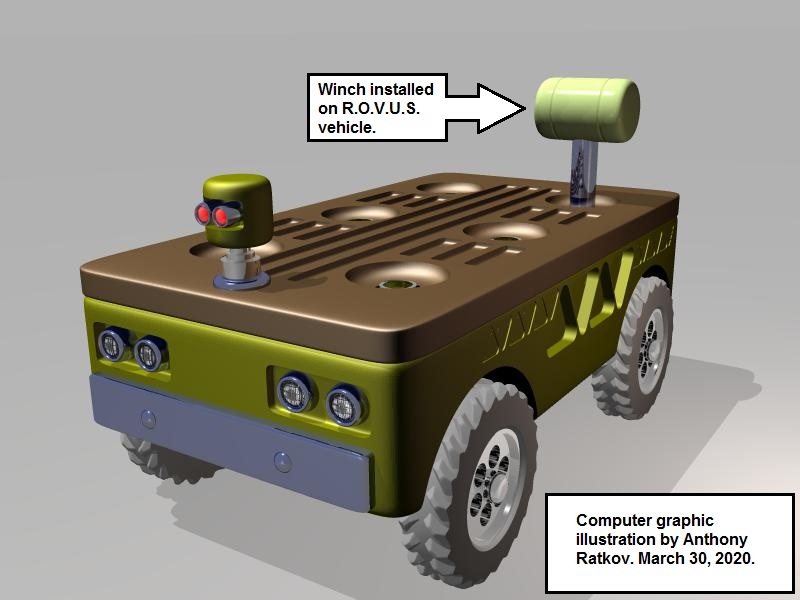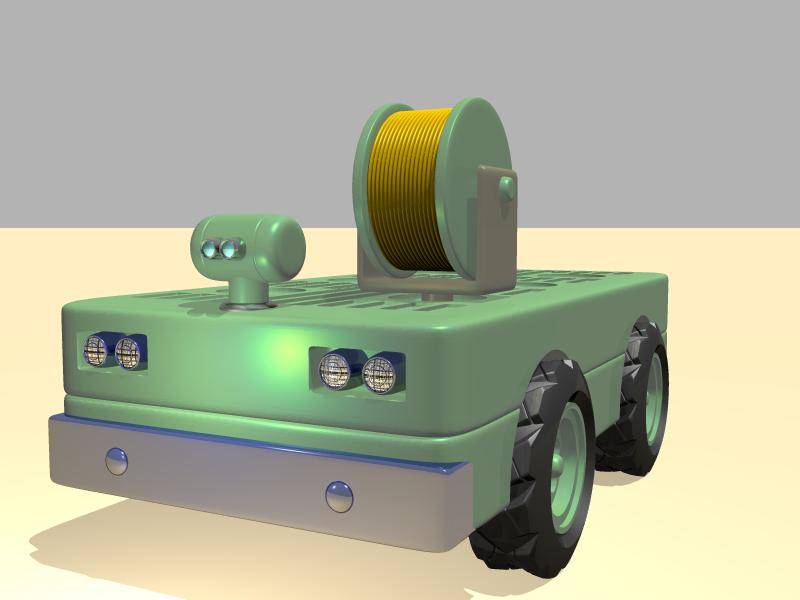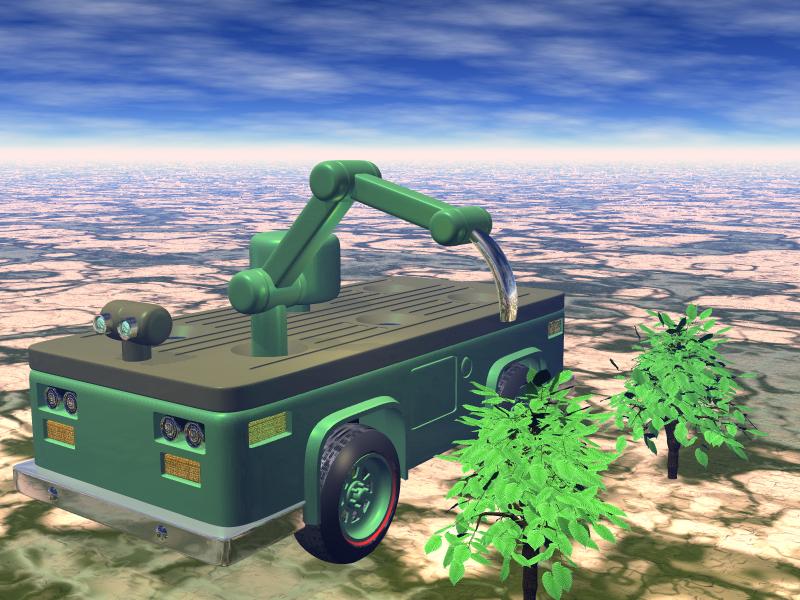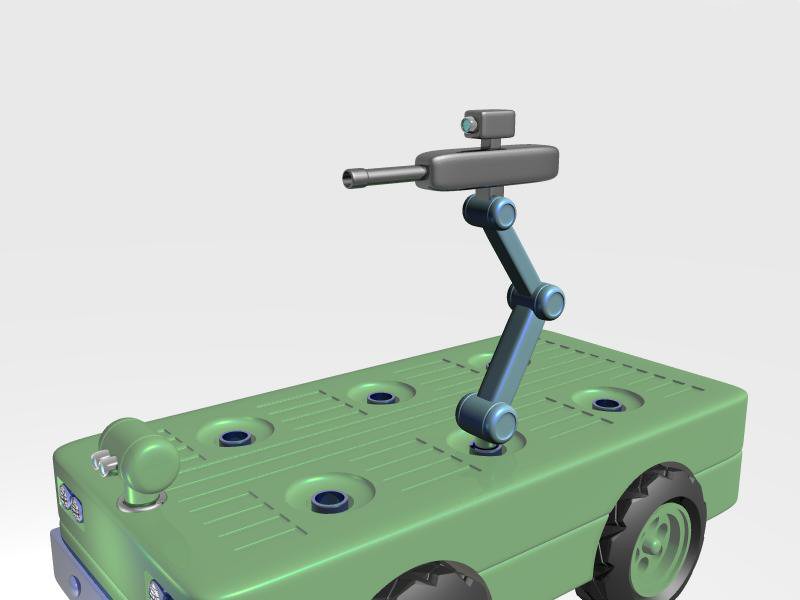Robotic Vehicles
Inventions for robotic vehicles by Anthony Ratkov.
ROVUS Vehicle Concept.
The ROVUS concept is a concept for a robotic vehicle, that may be computer-controlled or controlled by a human driver. The vehicle has sockets on it's cargo deck and several types of equipment can be installed in these sockets, to give the vehicle several different functions. The abbreviation ROVUS stands for Robot-On-Vehicle-Utility -System.
The illustration above shows the vehicle equipped with a robot for turning a valve in a chemical refinery. Another robot on the vehicle is equipped with a camera, for remote control of the vehicle. This may be used in hazardous environments, such as oil refineries and chemical refineries.
The illustration above shows the vehicle using a robot to turn a valve in a chemical refinery. The camera on the other robot may be used with machine vision system so the vehicle can function independently from a human operator.
The illustration above shows the vehicle with a man-lift bucket attached. This allows the vehicle to lift a man into an elevated work area, for example, for working on overhead power lines.
The illustration above shows a man being lifted to an elevated work area.
The illustration above shows the vehicle with an air compressor installed on it. This makes is possible to operate tools and equipment that are powered by compressed air.
The illustration above shows a man using a pneumatic pavement breaker, which is powered by the vehicle's air compressor.
The illustration above shows the vehicle equipped with a robot that places plastic warning cones in a work area. The robot can place the cones at the beginning of a construction project and can remove the cones after the work is completed. If it has a machine-vision system, it could so this without a human operator.
The illustration above shows the vehicle with a spool of cable that can be installed on it. This allows commercial uses of the vehicle by cable TV companies, phone companies, and electrical power utilities.
The illustration above shows the vehicle with a spool of cable attached to it.
The illustration above shows how two spools of cable can be installed on the vehicle. As many as six spools can be installed.
The illustration above shows the vehicle with a spool of cable and a robot installed on it. The robot can be used to handle the cable.
The illustration above shows the vehicle with a fire extinguisher installed on it.
The illustration above shows the vehicle with two fire extinguishers installed on it.
One of the agricultural uses of the vehicle is shown in the illustration above. The vehicle may be equipped with an implement for digging ditches or trenches.
Another agricultural use of the vehicle is shown in the illustration above. A robot that pumps water has been installed on the vehicle and it is being used to spray water on plants.
A computer may be installed on the vehicle as shown in the illustration above. A waterproof cover is shown above the computer terminal.
The illustration above shows the vehicle with two computer terminals and an antenna installed on it.
The illustration above shows the vehicle with two computer terminals installed on it, both terminals are covered with waterproof covers in this illustration.
The vehicle can be used as a platform to support surveillance cameras in military or civilian applications. The illustration above shows the vehicle with a surveillance camera installed in it.
The illustration above shows the vehicle with six surveillance cameras installed on it.
For military use, a gun may be installed on the vehicle. One gun is shown installed on the vehicle in the illustration above. As many as six guns may be installed.
The vehicle may be used to assemble parts of a pre-fabricated building. Several robots may be installed on the vehicle for this purpose, as shown in the illustration above.
The illustration above shows the vehicle parked inside a partially constructed pre-fabricated building.
The illustration above shows the vehicle being used to assemble the pieces of a pre-fabricated building.
The illustration above shows the vehicle parked near a pre-fabricated building after it has finished assembling the building.







































